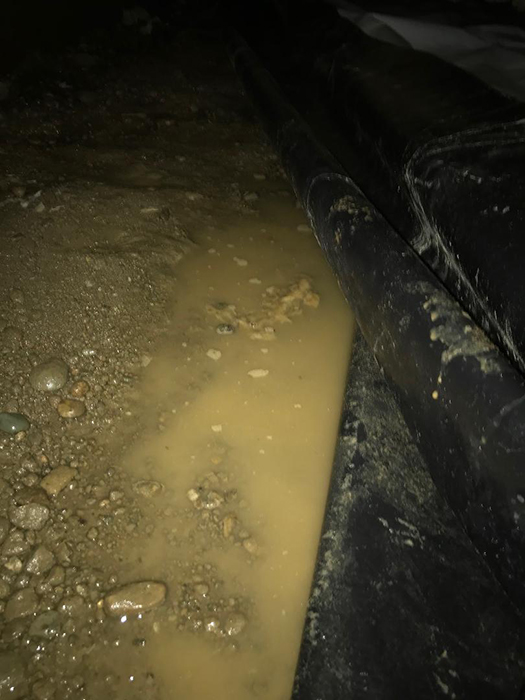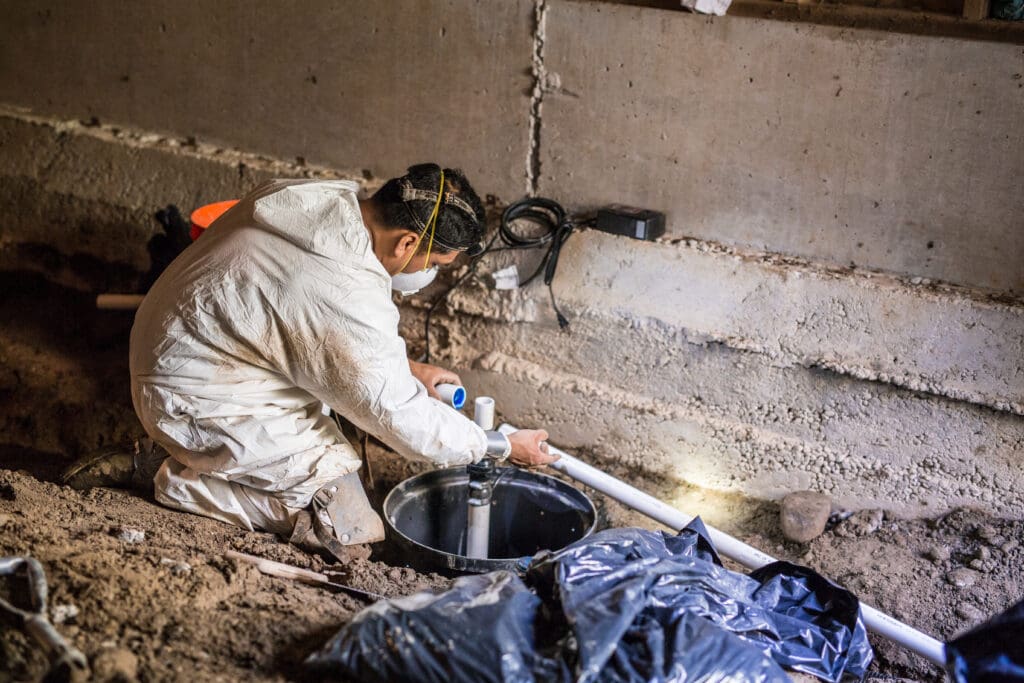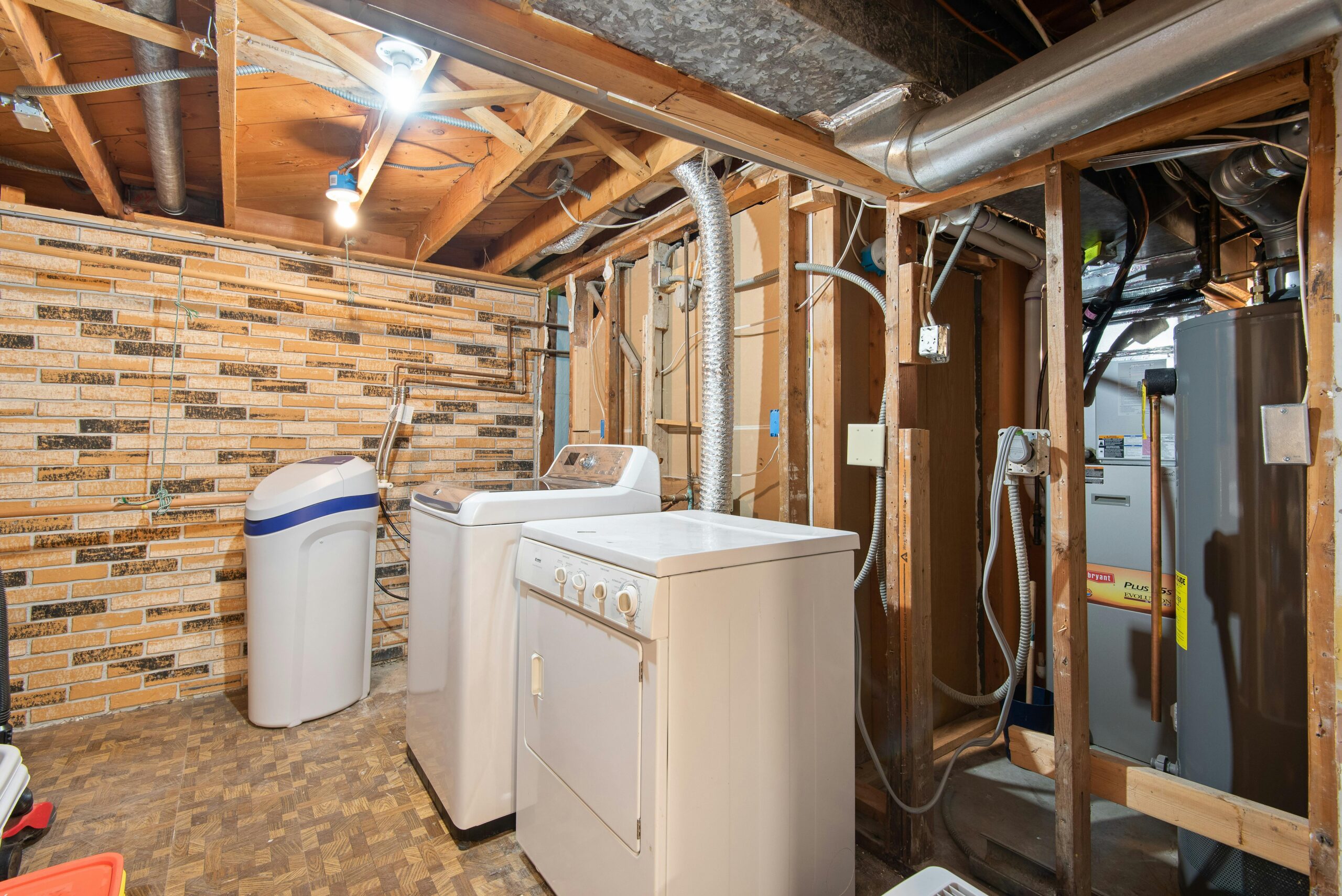Heavy rainfall and flooding can wreck havoc in your crawl space. Crawl space water removal is a high priority since the moisture can cause mold and may impact your insulation and foundation.
The easiest method of crawl space water removal is, of course, to prevent in from happening in the first place.
Even though most water damage in your home’s crawl space can be avoided, it does happen frequently in Northwest homes. If you are wondering “Is it bad if there is water in my crawl space?” The short answer is yes. Depending on how much moisture is in the crawl space will decide what level of water remediation is needed.
When you find water in your crawl space a lot goes into removing the water. Even the most daring DIY devotees will have a hard time to tackle it. It takes science-backed cleaning techniques and specialized equipment to drain excess water, dry the affected area, and get rid of things like mold and odor.
The next time you have a crawl space water removal job on your hands, here are some tips you’ll find useful to help solve the problem.
If you Already Have Water in Your Crawl Space, it Will Need to be Remediated
Water remediation refers to the process of cleaning, drying, and stabilizing a flooded area.
The homeowner can accomplish some of these tasks, but most will require professional help.In any case, this work will need to be completed before the preventative measures described below can be implemented.
Here’s a guide to the steps involved in water remediation:
1. Loss Assessment
The first step in water remediation is counting your losses. Here, a quality contractor and possibly an insurance adjuster will help you assess the damage caused by the water intrusion.
After the initial assessment, the contractor will recommend the necessary emergency precautions to prevent further damage.
Afterward, they’ll give you a detailed report of the extent of the damage as well as the cost of all the necessary repairs.
Keep in mind that homeowner’s insurance doesn’t cover damage caused by flooding. It only pays for damages caused by faulty plumbing and leaking roofs. For coverage on flood damage, you’ll need to be insured against floods and other natural disasters.
If you’re insured against such disasters, ensure that the contractor’s estimate for the repair costs matches that of the insurance adjuster. If the figures don’t match, have the two experts consult each other so that they can find common ground before non-emergency work commences.
2. Draining Excess Water
With loss assessment out of the way, it’s time to drain all standing.This kind of job requires much more than what a typical home vacuum can handle. In this case, call on an expert who uses wood floor drying systems, air movers, industry-grade extractors, high-quality blowers, and sub-floor drying equipment.
3. Removing Damaged Items and Building Materials
After removing all the stagnant water, it is then necessary to remove any parts of your home that need replacing. Typically, this includes the carpet, insulation, and the drywall. Removing these items will allow for a thorough drying of the rest of the building.
4. Drying and Dehumidifying
With excess water out of the way, the next step is to dry the remaining water and humid air. Using techniques such as dehumidification, experts will dry your home to prevent mold growth.
5. Cleaning and Sanitization
After removing all the dampness in your home, the next step is to clean and sanitize the affected area.Water damage is categorized into three types: white water damage, black water damage, and grey water damage. White water damage describes non-extensive damage from things such as an overflowing tub or a kitchen sink. This type of water is easy to sanitize, as it often doesn’t carry too many bacteria.
Grey and black water damage come from things like sewer bursts and toilet overflows. They’re harder to clean and sanitize because of their potential health hazards. Even after drying, these two kinds of water damage often leave behind bacteria, toxins, chemicals, and other contaminants.
Before you sanitize your home, it’s critical to look at type of water that caused the damage. From that, you’ll be able to determine what kind of cleaning equipment and sanitization supplies to use.
6. Mold Treatment
This critical step of water remediation is one of the reasons you shouldn’t do it yourself. Even if you manage to clear excess water and dry your home, chances are you won’t get the dehumidifying part right. The aftermath is a mold infestation in your home.
Mold can not only cause serious health effects but also reduce the resale value of your premises. As such, one must make deliberate efforts to disinfect every area in your home that has been exposed to moisture.
7. Restoration and Remodeling
The amount of renovation needed to restore your home to its pre-damage condition depends on the severity of the water damage. Damage can range from a small hole in your drywall, to the whole subfloor replaced. In any case, this step of the process is key to ensuring the integrity and safety of your
How to Prevent Water Damage in Your Crawl Space
While there’s nothing you can do to prevent natural disasters such as hurricanes or floods, you can take a few measures to safeguard your home against water damage not worry about crawl space water removal.
Here’s what you can do:
1. Install a Sump Pump
Installing a sump pump helps to divert water away from your premises during storms, hence prevent water from accumulating in your basement. It’s especially useful if your home is prone to groundwater seepage.
2. Watch Where You Plant
Some plants such as the weeping willows have invasive roots. If you plant them too close to your home, their roots will grow into your drainage pipes, sprinkler system, drainage field, foundation, and even septic tanks. This can cause blockages, which can burst your pipes open or cause sewage leaks.
3. Clean Your Roof Gutters
Clogged roof gutters will direct rainwater into your building’s foundation or basement, where it will cause all kinds of damage.
Who to Call for Crawl Space Water Services
Sometimes there’s little you can do to prevent water damage from happening. When a water disaster strikes, contact professional crawl space experts as soon as possible so for effective water damage solutions.




